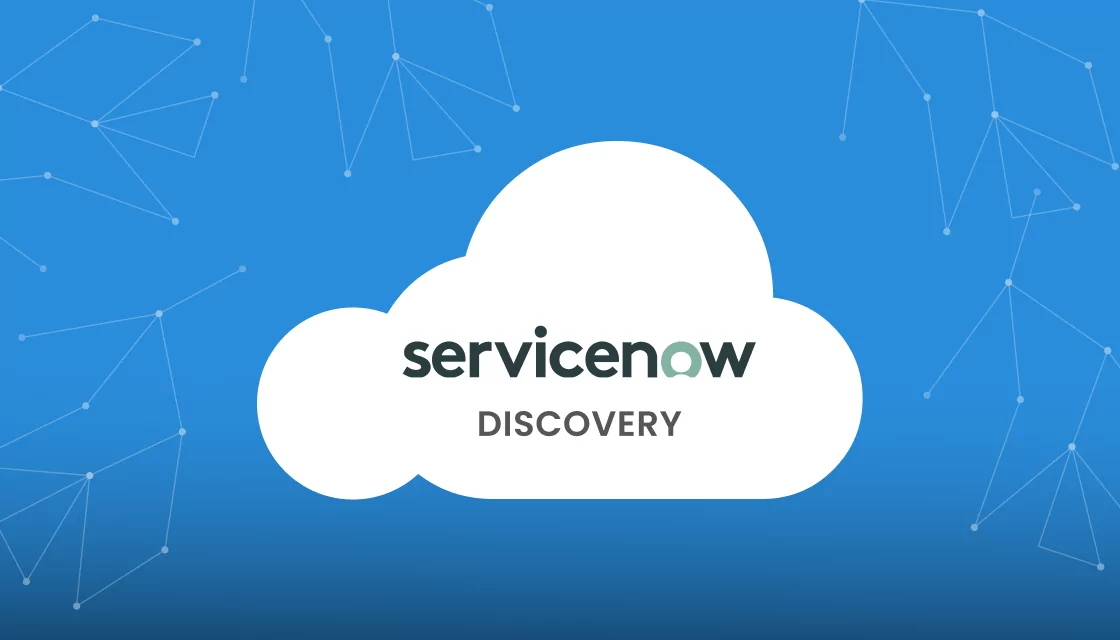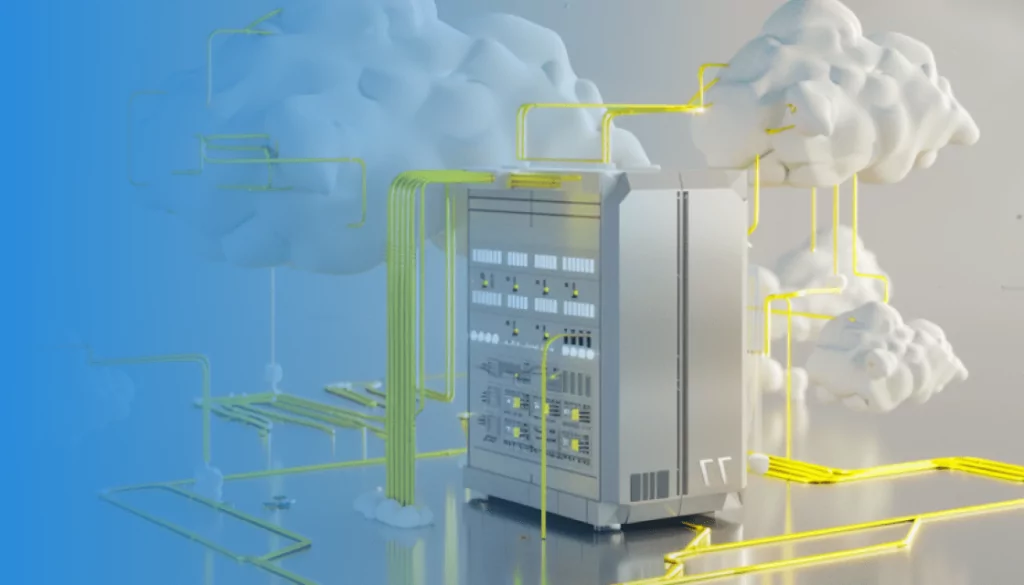What Is ServiceNow Discovery?
ServiceNow Discovery is a module within the ServiceNow IT Operations Management platform, which automates inventory and management of IT infrastructure within large organizations. It systematically detects all computing devices connected to the network and gathers detailed information about hardware, software, and associated services.
The primary function of ServiceNow Discovery is to maintain an up-to-date CMDB (Configuration Management Database). This database tracks the state of all IT assets, identifies their relationships with other IT services, and assists in impact analysis and risk assessments associated with infrastructure changes.
Learn more in our detailed guide to ServiceNow service mapping
Table of Contents
ToggleServiceNow Discovery Features
1. Infrastructure Discovery
ServiceNow Discovery provides a complete view of an organization’s IT landscape. It achieves this by scanning network infrastructure and identifying connected devices such as servers, laptops, desktops, virtual machines, and network devices.
The tool provides the data necessary for asset management, problem troubleshooting, and ensuring security protocols are followed throughout the organization. It provides detailed insights into both physical and virtual assets at an enterprise scale.
2. Application Dependency Mapping
Application Dependency Mapping (ADM) analyzes and visualizes relationships between applications and the underlying IT infrastructure. This visual mapping helps IT teams understand how different applications interact and depend on various network components, supporting incident management and reducing service downtime.
By clearly outlining application connections and dependencies, ADM also supports more informed decision-making during IT transformations, migrations, or upgrades, ensuring seamless and risk-minimized transitions in IT environments.
3. Dynamic Multi-Cloud and Virtual Environment Support
ServiceNow Discovery is designed to adapt to modern IT environments which often include hybrid and multi-cloud configurations. It automatically maps and manages resources across various cloud platforms and virtual environments, ensuring that IT departments have visibility and control over their entire hybrid infrastructure.
4. Integration with Third-Party Data
ServiceNow Discovery can ingest and reconcile third-party data. This feature allows it to collect and consolidate information from various external management tools and databases, creating a comprehensive overview of all IT assets and configurations. The integration extends the functionality of the CMDB, ensuring it remains accurate and reflective of real-time changes.
This is part of a series of articles about Servicenow CMDB
Types of Assets Covered by ServiceNow Discovery
Network Discovery
Network discovery focuses on identifying all network devices, including switches, routers, wireless controllers, and load balancers. This process aids in documenting the entire network topology, providing critical insights into the network’s health, performance, and security posture.
The data gathered from network discovery supports network management, enabling proactive monitoring, incident response, and network performance and reliability management.
CI Discovery
Configuration Item (CI) discovery involves identifying, categorizing, and managing all configuration items within the IT landscape. CIs can range from hardware components to network devices, software applications, and any service-related entities that support business processes.
CI discovery ensures that every configuration item is individually documented and tracked effectively. This is important for change management, compliance auditing, and streamlining of IT processes.
Cloud Discovery
Cloud discovery identifies cloud resources from providers like AWS, Azure, or Google Cloud. This feature dynamically discovers and maps cloud infrastructures, providing visibility into virtual machines, storage systems, and associated cloud services.
Cloud discovery enables organizations to effectively document and manage cloud environments like they do with on-premises resources, providing a unified infrastructure management solution.
Serverless Discovery
ServiceNow also includes the capability to discover and manage serverless functions, which are increasingly common in modern IT environments. ServiceNow Discovery recognizes and tracks functions and services that run on serverless platforms like AWS Lambda and Azure Functions, documenting how these components interact with other parts of the IT infrastructure.
This capability is important for managing scale, costs, and compliance in serverless environments, ensuring these highly dynamic components can be monitored and managed like traditional IT assets.
Limitations of Servicenow Discovery Tool
While ServiceNow Discovery is a powerful solution, it has several limitations, as reported by users on the G2 platform.
Incomplete Network Visibility
ServiceNow Discovery’s agentless approach allows for broad network scanning, but it has significant limitations related to network visibility. Specifically, the tool might not fully recognize all segments of a network if subnets are unknown or not listed in the system’s IP Networks table.
The main challenge is that ServiceNow relies entirely on predefined network data for scanning active endpoints. As a result, any subnets that are not accurately recorded in the database can lead to gaps, causing some network components to be overlooked. This incomplete visibility can significantly impair the tool’s effectiveness, and can affect both security and network performance.
Identification Conflicts
In environments where Linux servers permit both SNMP and SSH communications, ServiceNow Discovery might face challenges with fluctuating asset classifications. This duality can lead to situations where the same asset repeatedly changes its classification status within the CMDB. Each access method might cause the asset to be classified differently, with the same server logged as separate entities.
This issue can create inconsistencies and inaccuracies in the CMDB, complicating asset management, and potentially leading to errors in IT operations, risk assessments, and compliance reporting.
Identification Rules Mismatch
In some cases, identification rules within ServiceNow Discovery are defined in a way that does not match an organization’s environment. This can result in significant inaccuracies in the CMDB, notably duplications of Configuration Items (CIs). These inaccuracies stem from default or out-of-the-box identification rules that may not be sufficiently tailored to the specific IT environment of an organization.
When such rules are applied universally without adjustments, they may fail to distinguish between similar but distinct assets, or they may inaccurately merge or split asset records. This can lead to a CMDB cluttered with erroneous or redundant entries, complicating asset tracking, compliance audits, and the overall integrity of IT management processes.
Overlapping Discovery Efforts
When multiple discovery operations are scheduled without proper coordination, it can lead to overlapping discovery efforts. This overlap often taxes the Management, Instrumentation, and Discovery (MID) servers unnecessarily, potentially degrading performance across ServiceNow’s IT service management environment.
Overlapping scans not only put additional load on the infrastructure but also can lead to redundant data collection, which in turn increases processing time and may result in conflicting data entries in the CMDB.
Faddom: The Ultimate ServiceNow Service Mapping Alternative
Faddom is a lightweight alternative to ServiceNow Service Mapping. It is agentless, doesn’t require credentials, and is cost-effective, starting at $10K/year. Faddom can map your entire environment in real-time, updating 24/7. Only one person can map an entire organization in under an hour.
Learn more about Faddom for application mapping or start a free trial to the right





